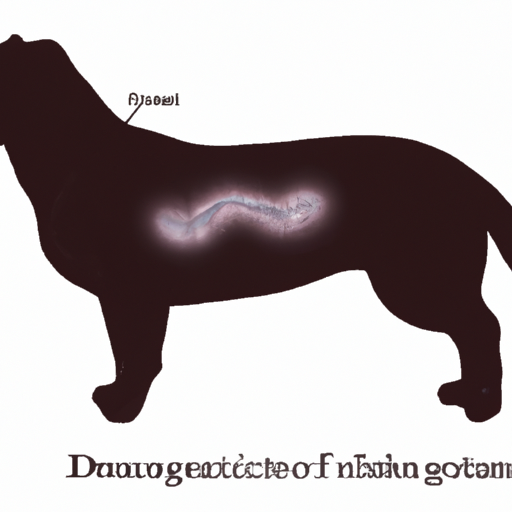Understanding Tapeworms
As a caregiver to your furry friend, it’s essential to understand what tapeworms are and how they affect dogs. Tapeworms are intestinal parasites that attach themselves to a dog’s digestive system. They are flat, segmented, and can grow as long as 20 cm. These parasites feed on the food that your dog consumes, depriving them of essential nutrients.
The most common type of tapeworm found in dogs is Dipylidium caninum. The life cycle of this tapeworm involves fleas as intermediate hosts. This is why dogs with fleas have a higher risk of contracting tapeworms.
How Dogs Get Infected by Tapeworms
Dogs get infected by tapeworms in the following ways:
- Consuming Infected Fleas: Dogs often swallow fleas while grooming. If the flea is infected with tapeworm larvae, the dog can get infected.
- Eating Infected Animals: Dogs can also get infected by eating rodents, rabbits, or birds that have tapeworms.
- Consuming Raw Meat: Feeding your dog uncooked or undercooked meat can expose them to tapeworms.
The Impact of Tapeworms on Dogs
A tapeworm infection can lead to various health issues in dogs. These include:
- Weight Loss: Tapeworms consume the nutrients from the food your dog eats, leading to weight loss despite a healthy appetite.
- Digestive Problems: Infected dogs may suffer from diarrhea, vomiting, or constipation.
- Irritation Around the Anus: Dogs may drag their bottoms on the floor due to the itching caused by tapeworm segments exiting the body.
- Change in Behavior: Infected dogs may become lethargic and lose interest in their usual activities.
Diagnosis and Treatment
If you suspect your dog has tapeworms, consult a vet immediately. A stool sample will likely be required for diagnosis.
Here’s a simple table to help you understand the common treatment options:
| Treatment | Description |
|---|---|
| Deworming Medication | This is the most common treatment. It kills tapeworms, allowing them to pass out through the dog’s stool. |
| Flea Control | Since fleas are a common carrier, controlling them is essential to prevent reinfestation. |
| Regular Check-ups | Regular vet visits will ensure early detection and treatment of any future infestations. |
Preventing Tapeworms in Dogs
Prevention is always better than cure. Here are some measures you can take to prevent tapeworm infection:
- Regularly treat your dogs and their environment for fleas.
- Avoid feeding your dog raw meat.
- Keep your dog from scavenging or hunting rodents and small animals.
- Regularly deworm your dog as recommended by your vet.
Frequently Asked Questions
Q: Can humans get tapeworms from dogs?
A: Yes, although it’s rare, humans can get tapeworms from dogs, especially if they accidentally ingest a flea infected with tapeworm larvae.
Q: How long does it take to get rid of tapeworms in dogs?
A: With proper treatment, tapeworms should be eliminated from your dog’s system within 2-3 weeks.
Q: Can I see tapeworms in my dog’s stool?
A: Yes, tapeworm segments can sometimes be seen in your dog’s stool or around their anus. They look like small, white worms or grains of rice.
Q: Can tapeworms make my dog sick?
A: While most dogs with tapeworms do not show severe symptoms, some dogs may become ill, especially if the infestation is large or if the dog is very young or has a weak immune system.
In conclusion, while tapeworms are a common issue among dogs, with proper attention, care, and preventive measures, you can ensure your furry friend stays healthy and happy. Always consult your veterinarian for advice regarding the health of your pet.



